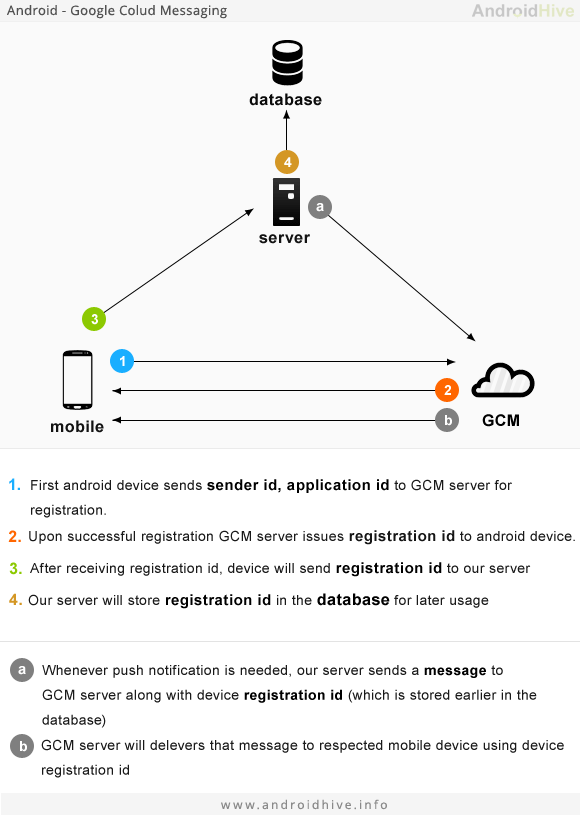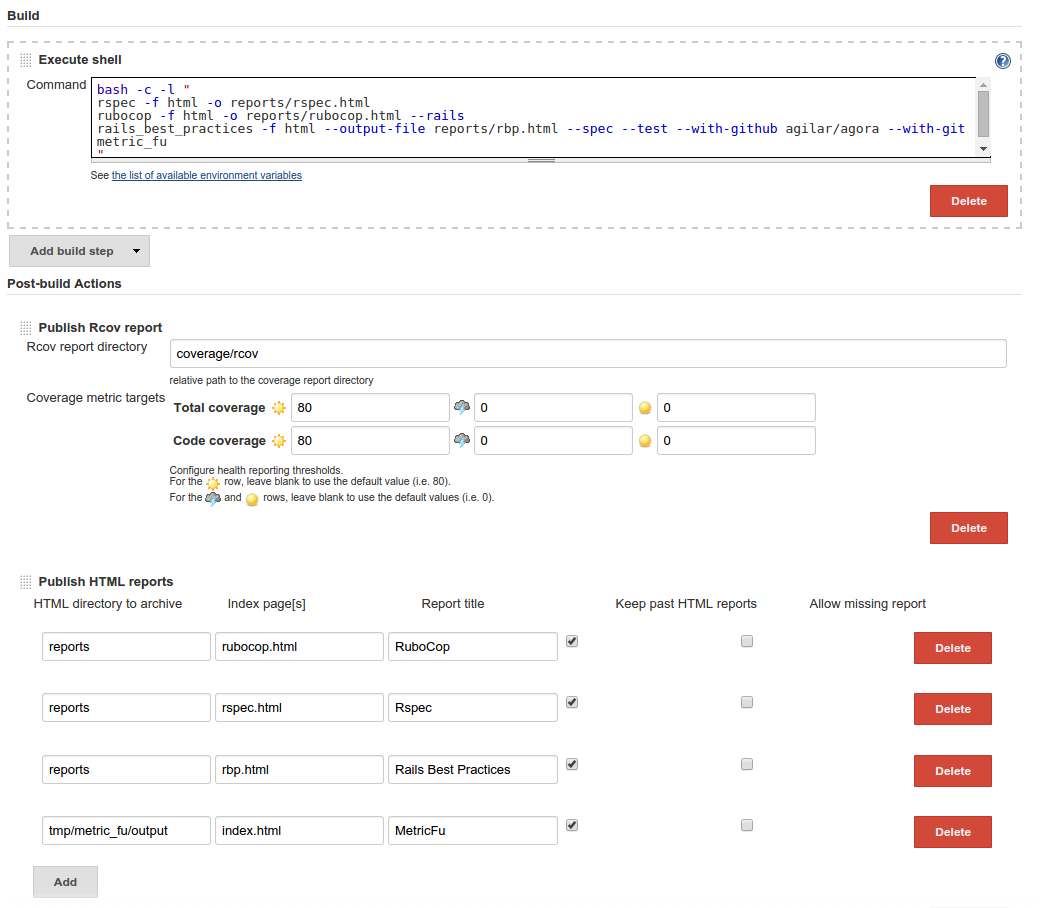Sometimes we need to send push messages from our Web App to Mobile App subscribers.
Main Mobile OS providers offer their own services:
- Apple: APN (Apple Push Notifications): for Iphone
- Google: GCM (Google Cloud Messages): for Android and Iphone
If you have only an Iphone App you can use only APN. But if you will have both Iphone and Android Apps, it could be a good idea to talk with the iOS Developers about to use GCM, in order to simplify the final System (need to talk, maybe they have great arguments to use APN).
I found this great schema at androidhive.info:
APN works similar. Our Rails server will need to:
- (3) Create an API end-point which stores the registration_id
- (a) Send push messages from our app
Our API can be ‘/v1/push_registration’ receiving a messages like:
{"apn_id" : "191434a07d17cad3446597e5ad7f1588"}
{"gcm_id" : "191434a07d17cad3446597e5ad7f1588"} |
The second point can be resolved with a gem. Below we will analyze some solutions for that point.
Bot apn_on_rails and gcm_on_rails seems outdated, as the last commit happened in 2012, and there were many changes in Rails and in the APN/GCM services themselves.
gem gcm
This gem only supports the GCM service. But there is no problem with Iphone Apps because this service supports them.
Implementation:
- Initialize object:
require 'gcm' gcm = GCM.new("my_api_key")
- Send a message:
registration_ids= ["12", "13"] # an array of one or more client registration IDs options = {data: {message: "Hello World"}, collapse_key: "updated_score"} response = gcm.send(registration_ids, options)
gem push-core
This gem supports both services: GCM and APN.
Implementation:
- We can initialize both services with their API keys:
Push::ConfigurationApns.create(app: 'app_name', connections: 2, enabled: true, certificate: File.read('certificate.pem'), feedback_poll: 60, sandbox: false) Push::ConfigurationGcm.create(app: 'app_name', connections: 2, enabled: true, key: '')
- Send a message:
Push::MessageApns.create( app: 'app_name', device: '', alert: 'Hello World', sound: '1.aiff', badge: 1, expiry: 1.day.to_i, attributes_for_device: {key: 'MSG'}) Push::MessageGcm.create( app: 'app_name', device: '', payload: { message: 'Hello World' }, collapse_key: 'MSG')
gem rpush
This gem supports all push services we find in the market: APN, GCM, Windows and Amazon. And it is by far the most active, so seems the facto gem to deal with the current Push Notification feature in ruby world.
Implementation:
- We can initialize both services with their API keys:
app = Rpush::Gcm::App.new app.name = "android_app" app.auth_key = "..." app.connections = 1 app.save!
- Send a message:
n = Rpush::Gcm::Notification.new n.app = Rpush::Gcm::App.find_by_name("android_app") n.registration_ids = ["..."] n.data = { message: "Hello World" } n.save!
Conclusion
Rpush gem seems the best option because it supports all Push services, and is the most active gem in this area.
For your Rails App we will need (for our config file) the Application name and the auth_key.


